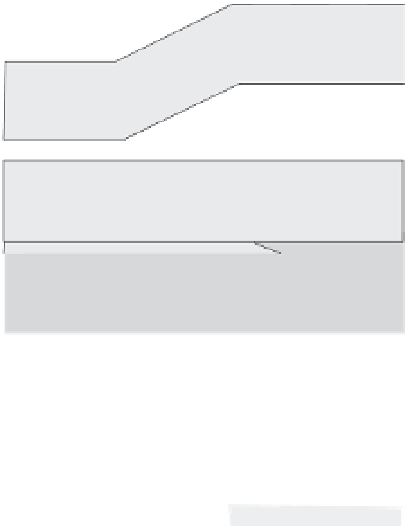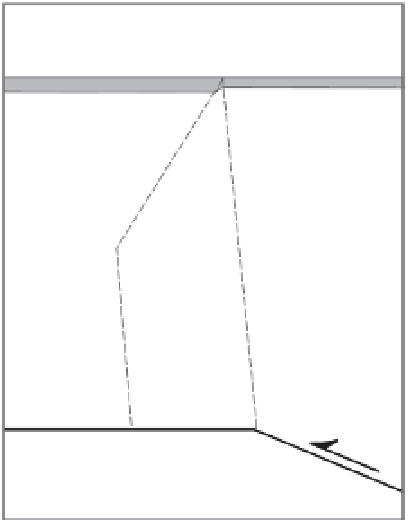Geology Reference
In-Depth Information
earthquakes appear to have occurred during
spans of 100-200 years, whereas each cluster is
separated from the succeeding cluster by an
earthquake-free interval of 150-300 years. The
uneven temporal spacing of San Andreas
earthquakes presents a challenge to seismologists
trying to understand rupture physics and
recurrence intervals. Moreover, the clustering of
events suggests that seismic risks along this
segment of the San Andreas Fault are very
different than previously thought. Based on the
1984 data, it was deduced that the earthquakes
were regularly spaced in time and had a
recurrence interval of about 140 years. Given
that the last large rupture in this area was in
1857, this scenario would suggest that the next
big rupture could be imminent. In contrast, the
1989 data suggest that, because clustered
earthquakes commonly occur within a few
decades of each other and because no major
rupture has occurred in the past 140 years, we
are presently in one of the quiescent periods
between clusters and that this quiet period
might last for another 100 years!
Growth Strata Above Blind Thrusts
note: thickness change
G
NG
NG
G
G
NG
growth
triangle
G
pre-growth
strata
G growth
NG no growth
1. restore upper depositional
surface
G
2. define uplift & slip
thickening
across forelimb
uplift
over ramp
Buried faults in terrestrial settings
Whereas faults that rupture the surface grab our
attention, a larger seismic hazard is commonly
posed by buried faults. Not only is their location
poorly known such that seismic zoning for
construction may ignore the hidden hazard, but
when such faults do rupture, they tend to cause
greater ground shaking (Somerville and Pitarka,
2006) because energy spreads outward above
the buried fault tip rather than being guided and
focused along the fault zone. Despite this hazard,
quantifying slip on buried faults, particularly in
the absence of clearly offset markers (a condition
that is typical in most terrestrial realms), has
posed a paleoseismological challenge. Some
recent success has been achieved, however,
using the shape of growth strata in the shallow
subsurface to quantify the timing and magnitude
of past slip events. The approach relies on the
observation that, within the forelimb of fault-
bend folds (Suppe, 1983), any increment of slip
causes differential uplift of the hanging wall that
lies above the ramp, whereas no uplift occurs
fault
magnitude
of slip
Fig. 6.9
Slip-controlled growth strata above a blind
thrust fault.
The forelimb of a fault-bend fold is differentially uplifted
and lengthened during each increment of slip, thereby
creating a triangular accommodation space above the
forelimb that can be subsequently filled with growth
strata (G). Once deposition overtops the differentially
folded forelimb, planar non-growth (NG) strata are
deposited. A two-step process (lower panels) underpins
calculation of the amount of slip related to one increment
of growth strata. First, any post-depositional deformation of
the top of the growth strata is removed in order to restore
it to its depositional geometry (usually assumed horizontal).
By maintaining the bed thickness, the base of the growth
strata is also restored downward in this step to its position
at the beginning of deposition. Second, the differential
uplift of the base of the restored growth strata is measured
and the amount of slip on the fault that is required to
produce the observed uplift is calculated (lowest panel).
























































































